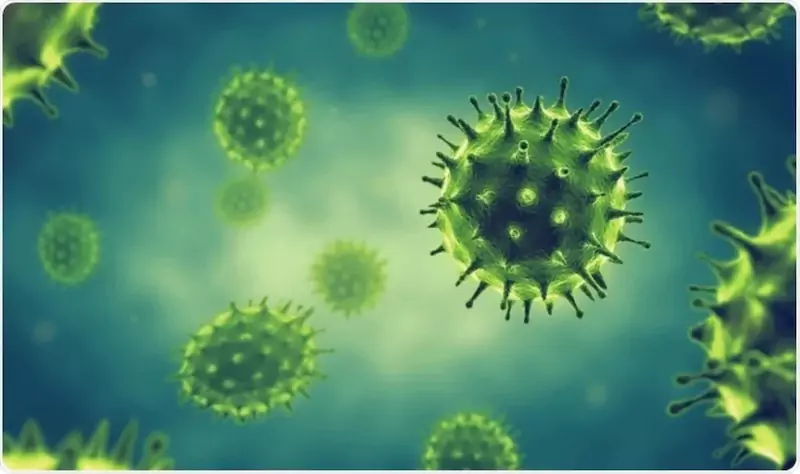How are Viruses Different From Bacteria Apex

Microorganisms, specifically viruses and bacteria, are often mentioned in the same breath due to their microscopic size and their ability to cause diseases in humans and other organisms. However, despite these superficial similarities, viruses and bacteria are fundamentally different in many ways. These differences range from their basic structure and metabolic activity to their modes of reproduction and pathogenesis. In this article, we will delve deeper into these differences, providing a comprehensive comparison between viruses and bacteria. Understanding these differences is not only crucial for academic purposes but also plays a significant role in the development of effective strategies for combating bacterial and viral infections.
Let’s take a closer look at the question, how are viruses difference from bacteria apex.
Structure
One of the primary differences between viruses and bacteria lies in their structure. Bacteria are single-celled organisms, also known as prokaryotes. They have a complex cellular structure that includes a cell membrane, cytoplasm, and a nucleus containing their genetic material. The nucleus of a bacterium is not enclosed within a nuclear membrane, unlike in eukaryotic cells. Instead, the bacterial DNA is found in a region of the cell called the nucleoid. Additionally, bacteria also have other structures such as ribosomes for protein synthesis, a cell wall for protection, and in some cases, flagella for movement.
In stark contrast, viruses are not considered living organisms as they lack a cellular structure. Instead, they are essentially nucleic acid (DNA or RNA) enclosed in a protein coat called a capsid. This genetic material carries the information necessary for the virus to replicate. Some viruses may also have an outer envelope derived from the host cell’s membrane. This envelope often contains proteins that are crucial for the virus to infect host cells. The simplicity of the viral structure is one of the reasons why viruses are much smaller than bacteria.
Metabolism
Another significant difference between viruses and bacteria is their metabolism. Bacteria, being living organisms, are capable of independent metabolic activity. They can obtain energy from various sources, such as sunlight in the case of photosynthetic bacteria or organic matter in the case of heterotrophic bacteria. This metabolic activity allows bacteria to grow, reproduce, and carry out essential functions necessary for survival. For instance, bacteria can synthesize their own proteins, nucleic acids, and other biomolecules. They can also carry out respiration or fermentation to generate energy.
On the other hand, viruses lack the machinery required for metabolic activity. They are entirely dependent on host cells for their replication and survival. Once inside a host cell, viruses hijack the cellular machinery to produce more viral particles. They use the host’s nucleotides to replicate their genetic material and the host’s ribosomes to synthesize their proteins. This fundamental difference in metabolism is one reason why antibiotics, which target bacterial metabolic processes, are ineffective against viral infections. Antiviral drugs, on the other hand, often target specific steps in the viral replication cycle.
Reproduction
Reproduction is another area where viruses and bacteria differ significantly. Bacteria reproduce through a process called binary fission. In binary fission, a single bacterium duplicates its DNA and then divides into two identical daughter cells. This asexual reproduction allows bacteria to rapidly multiply and colonize various environments. Under optimal conditions, some bacteria can divide every 20 minutes, leading to exponential growth.
In contrast, viruses cannot reproduce independently. They require a host cell to replicate. Once inside a host cell, viruses inject their genetic material, which then takes control of the cellular machinery. The host cell is then forced to produce new viral particles, which eventually burst out of the cell, destroying it in the process. This cycle of infection and replication is what leads to the spread of viral diseases. The fact that viruses use host cells to reproduce also makes it challenging to develop antiviral drugs that can inhibit viral replication without harming the host cells.
Pathogenesis
Understanding the pathogenesis, or the mechanism of disease development, is crucial in differentiating between viruses and bacteria. Bacteria can cause diseases through various mechanisms. Some bacteria produce toxins that damage host tissues. These toxins can either be exotoxins, which are secreted by the bacteria, or endotoxins, which are released when the bacteria die. Other bacteria invade and multiply within host cells, causing cell death. Bacterial infections can also trigger an immune response, leading to inflammation and other symptoms.
Viruses, on the other hand, have a different pathogenic mechanism. They invade host cells and use the cellular machinery to replicate. This process often leads to the destruction of the infected cells. Additionally, viruses can also trigger an immune response, which can cause inflammation and other symptoms. However, the primary damage caused by viruses is often a result of the destruction of host cells during the replication process. Some viruses can also cause cancer by integrating their DNA into the host’s genome, leading to uncontrolled cell growth.
Conclusion
In conclusion, while viruses and bacteria may share some similarities, such as their ability to cause diseases, their differences in structure, metabolism, reproduction, and pathogenesis set them apart. Bacteria are single-celled organisms with complex cellular structures and independent metabolic activity. They reproduce through binary fission and can cause diseases through various mechanisms. Viruses, on the other hand, lack cellular structure and are entirely dependent on host cells for replication. They do not possess metabolic activity and cause diseases primarily through the destruction of infected host cells. Understanding these differences is crucial in developing effective strategies for combating bacterial and viral infections. It also underscores the importance of different treatment approaches for bacterial and viral infections, with antibiotics being effective against bacteria but not viruses, and antiviral drugs being needed to combat viral infections.

